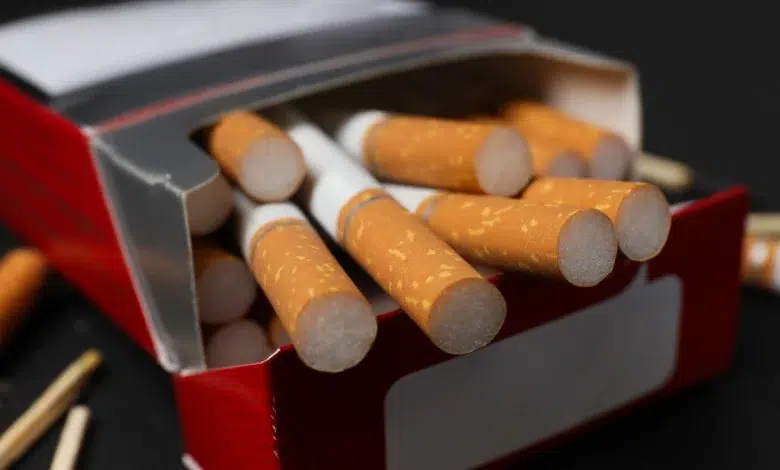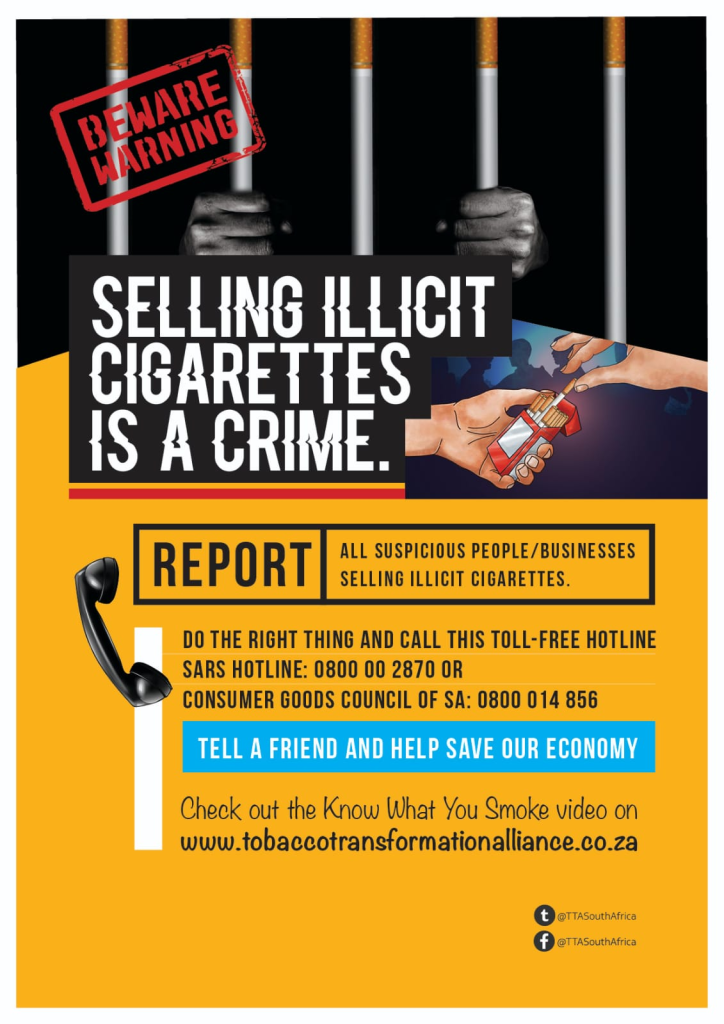Why Cheap Cigarettes Keep Hooking South Africa’s Youth – And How to Stop It

Table of contents
- Price Accessibility and Illicit Cigarettes Bypassing Regulations
- The Role of Peer Influence and Social Pressures
- Marketing Tactics Exploiting Regulatory Loopholes
- Easy Availability Near Educational Institutions
- Health Risks and Expert Commentary
- Strengthening Law Enforcement Against Illicit Trade
- Expanding Education Campaigns to Counter Peer Influence
- Enhancing Parental Awareness and Involvement
- Closing Regulatory Loopholes and Controlling New Nicotine Products
- The Central Role of SATTA Campaigns
- Monitoring and Research for Informed Policy
- Building Community and School-Based Support Networks
Price Accessibility and Illicit Cigarettes Bypassing Regulations
Cheap cigarettes remain the main driver hooking youth into tobacco use in South Africa. Illicit cigarettes now make up over 60% of the tobacco market, sold at prices significantly below legal brands. These products evade taxes and health regulations, making them far more affordable for young people, especially those from disadvantaged backgrounds.
Since 2017, the illicit cigarette market has nearly doubled, rising from about 30% to 60%, intensifying tobacco use among youth. Recent studies show nearly 22% of South African adolescents and young adults aged 12–24 currently use tobacco, with prevalence among school dropouts as high as 51%, compared to about 16% for learners still in school.
This low price encourages frequent purchasing and sustained addiction, undermining public health efforts to reduce smoking rates.
The Role of Peer Influence and Social Pressures
Peer influence significantly affects youth smoking habits. Teenagers often view cigarettes as symbols of adulthood and social belonging. Young people with friends or family members who smoke are twice as likely to start smoking themselves.
Social environments sometimes glamorise smoking, making it more attractive and harder for young people to refuse cheap cigarettes, especially in settings where peer pressure is strong.
Marketing Tactics Exploiting Regulatory Loopholes
Illicit sellers use marketing tactics that exploit gaps in tobacco laws. Unlike legal tobacco products that must carry health warnings and are sold only in specific pack sizes, illicit cigarettes are often sold loose or in unregulated small packs, bypassing advertising restrictions and health messages.
These products are commonly sold near schools and informal community hubs where young people gather, enabling easy access to underage users. The evolving tobacco market now includes aggressive promotion of new nicotine products like e-cigarettes and vapes, which circumvent existing regulations and complicate control efforts.
Easy Availability Near Educational Institutions
Cheap illicit cigarettes are sold frequently near schools, often openly by informal vendors operating with minimal enforcement against them. This ready availability adds to youth accessibility and normalises tobacco use among children and teenagers.
According to the South African Global Adult Tobacco Survey conducted in 2021, it was found that 12.7 million people aged 15 years and above were currently using tobacco, making up one-third of the adult population. Tobacco smoking accounts for a large burden of preventable diseases and causes of premature death in South Africa.
Constant exposure to tobacco near educational institutions fosters a social environment where smoking appears normal and accepted, increasing youth initiation risk.
Health Risks and Expert Commentary
South Africa faces an alarming toll from tobacco use, with approximately 84,000 deaths annually linked to smoking and tobacco-related diseases. Starting smoking young raises the likelihood of developing lifelong addiction and suffering serious health problems such as cancers, heart disease, and respiratory illnesses.
Despite international initiatives to reduce tobacco use, the WHO estimated tobacco as the cause of more than 8 million deaths annually.
Health experts and the South African Tobacco Transformation Alliance (SATTA) stress the urgent need to curb illicit cigarette trade. SATTA campaigns raise public awareness of tobacco harms and highlight the dangers cheap illicit cigarettes pose to youth health.
Strengthening Law Enforcement Against Illicit Trade
Cutting the supply of illicit cigarettes requires stronger law enforcement. Measures include:
- Intensifying border control to stop smuggling.
- Cracking down on illegal vendors, both in physical markets and online.
- Seizure of illicit cigarettes and prosecution of offenders.
Without robust policing, illegal products will continue to flood local markets, maintaining youth access and addiction.
Expanding Education Campaigns to Counter Peer Influence
Public health initiatives must include age-appropriate education programmes in schools and communities. These should focus on:
- Informing youth about tobacco’s health risks.
- Teaching refusal skills against peer pressure.
- Debunking myths glamorising smoking.
Effective education can decrease the social acceptance of tobacco and prevent early initiation.
Enhancing Parental Awareness and Involvement
Parents and guardians must be empowered to actively discuss tobacco risks with their children. Monitoring their social environments and encouraging tobacco-free lifestyles reduce youth smoking initiation.

Parental involvement is linked with lower tobacco use among adolescents by fostering supportive, non-smoking home environments.
Closing Regulatory Loopholes and Controlling New Nicotine Products
South Africa’s tobacco laws must evolve to cover new nicotine products, including e-cigarettes and vapes. Regulatory steps should:
- Enforce strict age restrictions on sales.
- Ban marketing near schools.
- Mandate health warnings and standardised packaging.
Closing these loopholes is crucial to prevent nicotine addiction pathways beyond traditional cigarettes.
The Central Role of SATTA Campaigns
SATTA leads the fight against illicit cigarettes through advocacy and awareness campaigns such as “Stop the Illicit Trade” and “Protect Our Youth”. Their work includes:
- Promoting policy changes.
- Engaging communities in anti-tobacco activities.
- Educating the public on the harms of tobacco and illicit trade.

Amplifying SATTA’s voice is vital to sustaining momentum in tobacco control efforts.
Monitoring and Research for Informed Policy
Ongoing research is essential for understanding youth tobacco use trends and refining strategies. Recent data show:
- Overall tobacco use prevalence among South African youth is roughly 22%.
- Male adolescents (26%) are twice as likely to smoke as females (13%).
- School dropouts have significantly higher smoking rates (51%) than school-going learners (16%).
Regular monitoring enables targeted interventions for the highest-risk groups.
Building Community and School-Based Support Networks
Community engagement and school programmes that provide:
- Peer support groups.
- Access to extracurricular activities.
- Positive peer role models.
These help reduce tobacco’s appeal and offer healthy alternatives to smoking for youth.



